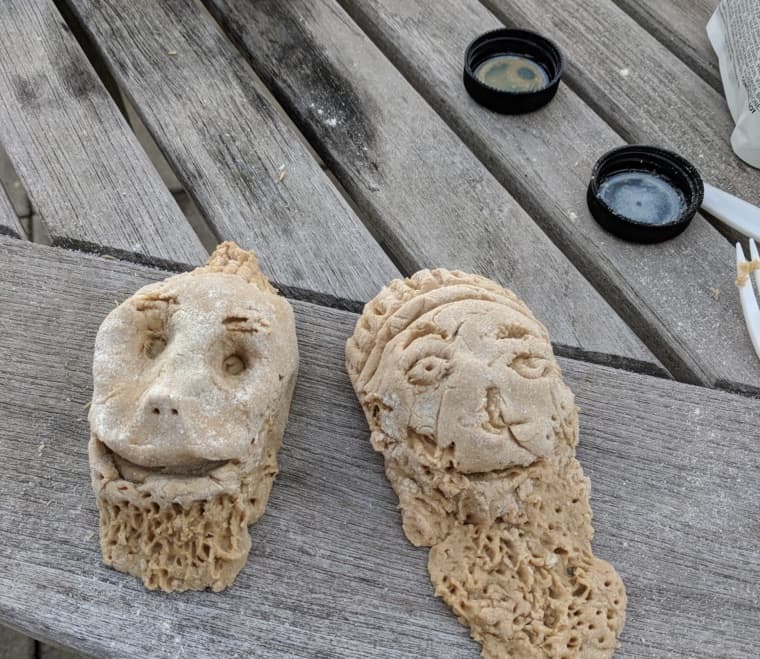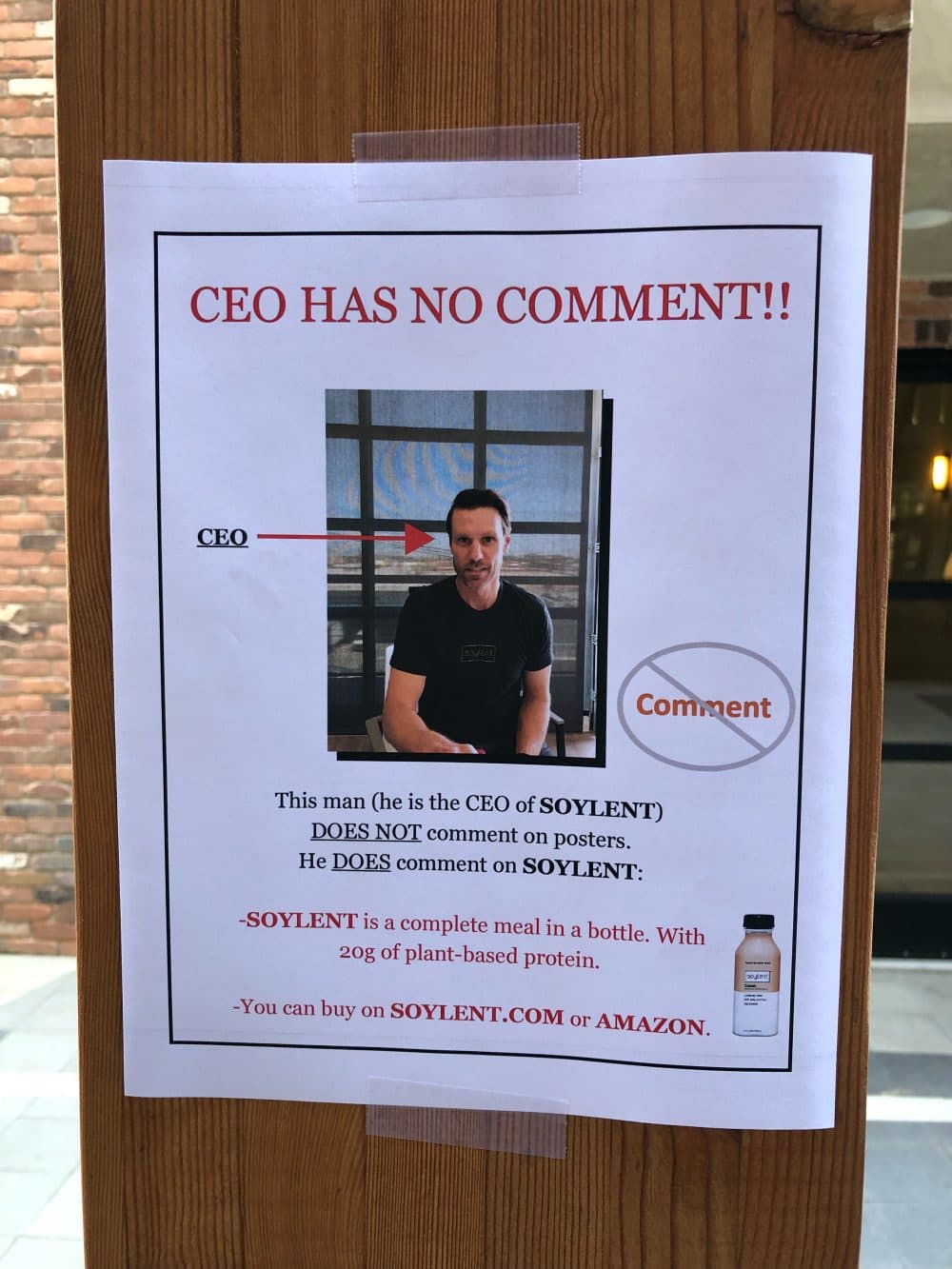Advertisement
When Is It Real Content And When Is It An Ad?
ResumeI didn't see it until my 20s, but years before that, even I knew the iconic, frequently-parodied line from the 1973 sci-fi film "Soylent Green."
My favorite parody:
And now, there's a real company called Soylent — though the shake they sell isn't made of people. (Or is it...??? OK, it's not).
The idea behind Soylent is that it's basically a meal in a bottle. The makers behind the shakes and powders they sell say it contains all the vitamins, minerals, proteins, etc. that you need to live. Some people use it as a meal replacement to lose weight; others use it as a way to consume nutrition quickly without having to prepare anything.
But in one weird example, Soylent was people — when a guy made a sculpture of his girlfriend out of it.
This is creepy and weird. Don't do this.
That picture went viral, and many, many Redditors and others were extremely skeptical about it. First of all, can you actually make a sculpture out of Soylent?
Ben and Amory tried to sculpt our technical director, Paul Vaitkus — whose beard is much longer these days, for the record — and here are their results:

But lucky for us, we have an excellent internet detective on our hands — Katie Notopoulos.
"I could not let this mystery go unsolved," she told Ben and Amory. "You know, something didn't pass my sniff test."
Notopoulos is a senior tech reporter at BuzzFeed and this kind of thing is her beat — internet and tech culture. She specializes in explaining online trends to you, especially if you don't have a teenager nearby to help you. And she often investigates weird posts just like this Soylent one to find out if it's #sponsoredcontent or not.
So Notopoulos checked out this weird Soylent sculpture. She studied the website on the flyer, www.soylentsculpture.net, and posited a few theories: Maybe this guy is deranged and it's real. Maybe it's viral marketing for Soylent. Or, maybe, it's just some kind of weird art project or prank.
She called Soylent to ask about it, and they didn't respond, at first. After she followed up, they responded... with this:

So Notopoulos did some more investigating on the Soylent subreddit, and someone deep in the comments said he knew who made it: a guy named Alan Wagner.
Wagner has a lot of posters on his Instagram that kinda look like the Soylent one.
"There's one where a woman is trying to eat dust and she's like, would you like to eat dust with me? And they're funny, 'cause they look very much like something you might actually see taped to a lamppost," says Notopoulos.
It turns out that Wagner is the guy who made that Soylent poster — but he wouldn't tell Notopoulos if he was paid for it or not. After some digging, Notopoulos learned that Wagner likely was paid for a similar type of ad featuring a dog and Soylent.
So, ¯\_(ツ)_/¯
"I think it was a little bit sad to realize that the thing that someone made that was clearly really funny and really creative was actually done as an advertisement," says Katie. "Something being an ad doesn't have to make it evil or bad. But I think it's kind of bad to deceive people and to not admit it if a reporter asks you," says Katie.
Steve Tapia, distinguished practitioner in residence at Seattle University Law School, who has also practiced with tons of different TV and media companies, says the context matters when you're talking speech, art and advertising.
When is it art? When is it advertising? Can it be both?
"It kind of raises sort of the same issue that I think Marcel Duchamp was trying to pose when he put urinals and snow shovels in museums. If you put something in a museum and people contemplate it that way, it becomes art. If you put an ad in a context where people are usually dealing with speech, it becomes speech. And when it has an analog component to it, when it's coming from the outside world and then you put it online, there's a whole other overlay of stuff that happens," says Tapia.
And while there are some laws regarding advertising, Tapia says it's important to be an informed reader and consumer.
"I think we all owe it to ourselves to be a lot more savvy about what what we're actually encountering when we get on the internet," he says.
This is the kind of thing the folks over at r/HailCorporate discuss, a lot. Their goal, they say, is "to document times when people act as unwitting advertisers for a product."
This new age online is tricky for all of us, which u/UltimateWhale learned, to his chagrin.
Some posters immediately accused him of being a shill for Discover, but if you look through his Reddit post history... he's probably just an average kid posting to Reddit.
It's a wild world out there folks — be prepared.


